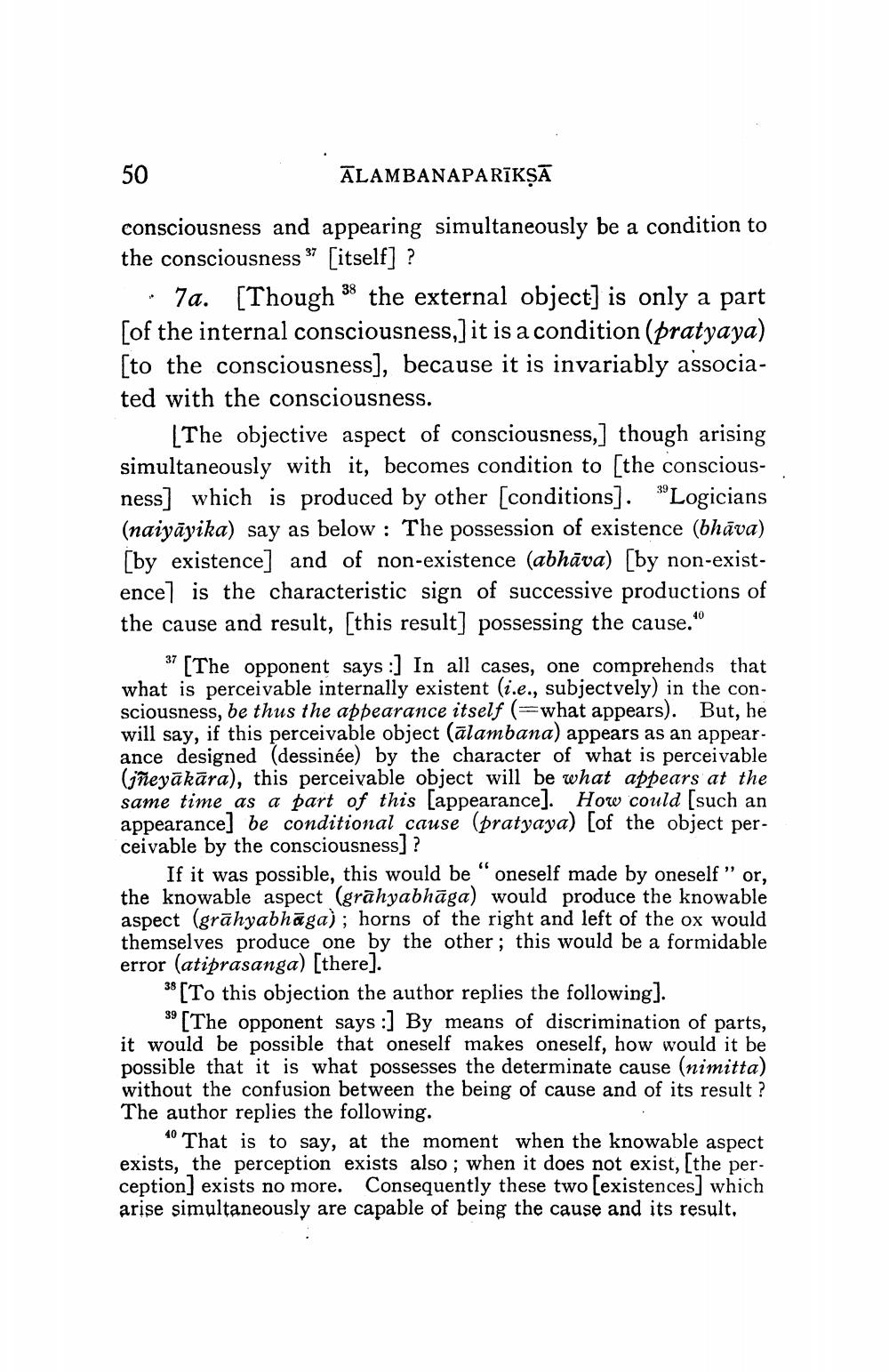________________
50
ALAMBANAPARĪKṢĀ
consciousness and appearing simultaneously be a condition to the consciousness 37 [itself] ?
38 7a. [Though the external object] is only a part [of the internal consciousness,] it is a condition (pratyaya) [to the consciousness], because it is invariably associated with the consciousness.
[The objective aspect of consciousness,] though arising simultaneously with it, becomes condition to [the consciousness] which is produced by other [conditions]. "Logicians (naiyayika) say as below: The possession of existence (bhava) [by existence] and of non-existence (abhava) [by non-existence is the characteristic sign of successive productions of the cause and result, [this result] possessing the cause."
37 [The opponent says:] In all cases, one comprehends that what is perceivable internally existent (i.e., subjectvely) in the consciousness, be thus the appearance itself (=what appears). But, he will say, if this perceivable object (alambana) appears as an appearance designed (dessinée) by the character of what is perceivable (jñeyākāra), this perceivable object will be what appears at the same time as a part of this [appearance]. How could [such an appearance] be conditional cause (pratyaya) [of the object perceivable by the consciousness]?
If it was possible, this would be oneself made by oneself " or, the knowable aspect (grahyabhāga) would produce the knowable aspect (grahyabhaga); horns of the right and left of the ox would themselves produce one by the other; this would be a formidable error (atiprasanga) [there].
38 [To this objection the author replies the following].
39 [The opponent says:] By means of discrimination of parts, it would be possible that oneself makes oneself, how would it be possible that it is what possesses the determinate cause (nimitta) without the confusion between the being of cause and of its result? The author replies the following.
10 That is to say, at the moment when the knowable aspect exists, the perception exists also; when it does not exist, [the perception] exists no more. Consequently these two [existences] which arise simultaneously are capable of being the cause and its result.




